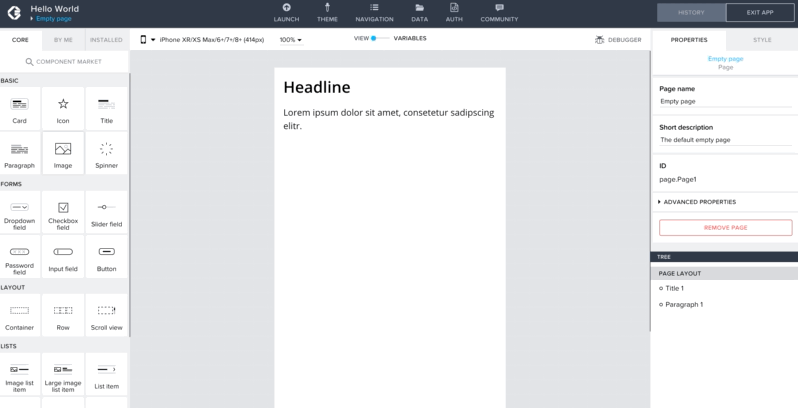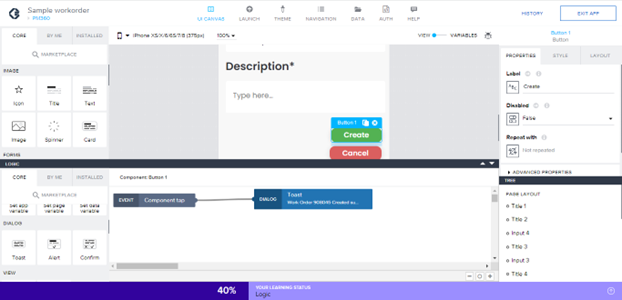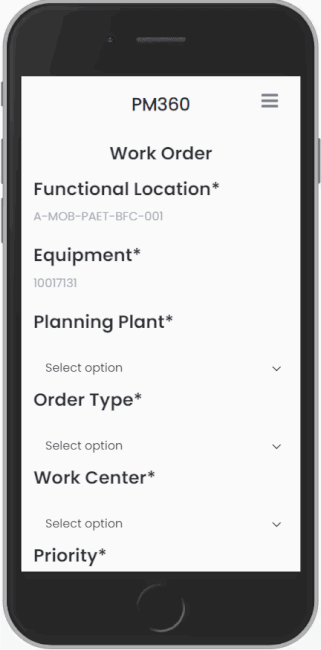About SAP Build App
SAP Build Apps is a web and mobile application development platform that enables businesses to create and deploy high-performance and cross-platform applications. It’s a cloud-based development environment. The platform offers an intuitive drag-and-drop interface to reduce development time and design user interfaces (UI) without coding. Developers can build their app components from scratch or select prebuilt libraries from the app store, all code written in JavaScript and HTML5. The standards are followed across platforms – iOS & Android, so it does not require separate versions per operating system.
SAP BTP provides cloud-based services and tools for building, deploying, and running applications, including various databases, analytics, machine learning, and integration tools. By combining SAP BTP and Build Apps, organizations can take advantage of both platforms to build and deploy custom applications quickly and easily. The combination of SAP BTP’s cloud-based services and Build Apps low-code platform can help organizations to streamline their development processes and reduce the time and resources required to build and deploy applications. It leads to improved efficiency, reduced costs, and faster time-to-market for new applications.
The SAP Build Apps platform utilizes the Build.me and AppGyver solutions from SAP, with the latter being a recent addition to the company’s offerings
Both were improved and included in SAP Build, which transformed it from a solely visual prototyping service to one that allows for the complete visual creation, deployment, and execution of enterprise-ready applications. In the coming years, demand for low-code solutions will increase significantly, according to PAC estimates. Multiple SAP Build features, including SAP Build Apps, SAP Build Process Automation, and SAP Build Work Zone, aim to tap into this market.
Low-Code/ No-Code Development:
SAP Build Apps reduces developing time and cost. It also allows users to create and manage forms, workflows, business logic and use prebuilt connectors to integrate with various systems such as SAP. Even though Build Apps is a low-code and no-code platform, it may still require some coding knowledge to fully utilize its features, particularly regarding complicated ,or custom requirements. It provides a flexible, robust solution for building custom business applications, which makes it accessible to those without extensive coding experience. The platform also integrates with APIs, data sources, and other tools, making it easy to build complex apps.

Figure 1: SAP Build Apps drag and drop with no code.
UI development with this low code is ideal for companies looking to increase user engagement.
SAP Fiori is user-friendly and simpler to work with your enterprise applications.

Figure 2: SAP Build Apps prebuilt connectors.
SAP Build Apps Key Features:
SAP Build is a cloud-based tool that enables users to create interactive, responsive, and mobile-friendly applications without requiring any coding skills. Some key features of SAP Build include:
- Drag-and-drop interface: SAP Build provides a drag-and-drop interface that allows users to create UI designs and workflows quickly and easily.
- Pre-built templates: SAP Build provides a set of pre-built templates that can be customized to meet specific business requirements, reducing the time and effort required for application development.
- Design patterns: SAP Build includes a set of pre-built design patterns that conform to SAP design standards, making it easier to create user-centric designs that are consistent across different applications.
- Collaboration tools: SAP Build enables teams to collaborate effectively by providing a platform for sharing feedback and ideas on the design and functionality of the application.
- Responsive design: SAP Build applications are designed to be responsive, enabling them to run on different devices and screen sizes without requiring additional coding.
- User feedback tools: SAP Build provides a platform for gathering user feedback during the design and development process, enabling teams to create applications that meet user needs and preferences.
- Analytics and Reporting: SAP Build includes analytics and reporting tools that enable users to track the performance of their applications and make data-driven decisions.
- Integration: SAP Build enables easy integration with other SAP tools and platforms, allowing users to create seamless workflows and processes.
- Custom code: SAP Build enables users to add custom code to their applications, providing flexibility and customization options.
- Security: SAP Build includes security features that help protect sensitive data and prevent unauthorized access to applications.
Integration of SAP Build Process Automation with SAP Build App:
Build Apps, helps to connect with Process Automation to trigger the automation from an application like Reset password, Leave Request, User Creation, Etc. SAP Build offers various features to automate the application development process and can be integrated with other SAP platforms to streamline the development process further. Here are some steps to combine SAP Build process automation with SAP Build apps:
Identify the requirements: First, identify the application development process that needs to be automated. Determine the steps involved in the process and the tools required to automate it.
Choose the automation tools: SAP provides various automation tools such as SAP Cloud Platform Workflow, SAP Process Orchestration, etc., which can be integrated with SAP Build.
Integrate the tools: Once the automation tools are identified, integrate them with SAP Build. This can be done by configuring the tools to connect with SAP Build APIs.
Define the process flow: Define the process flow for the automated process. Determine the input and output requirements, the decision points, and the actions that need to be taken at each stage of the process.
Test the process: Test the automated process to ensure it meets the expected requirements and functions. .
Build the application: Once the automated process is defined and tested, build the application using SAP Build. Use automation tools to streamline the development process and ensure that the application meets the defined requirements.
Deploy the application: Once the application is built, deploy it on the desired platform. Use the automation tools to automate the deployment process and ensure that the application is deployed correctly.
By combining SAP Build process automation with SAP Build apps, you can streamline the application development process and improve the efficiency of your development team.
Mobolutions with SAP Build Apps:
The PoC’s designed by Mobolutions with SAP Build Apps have significantly decreased the workload for the products requiring immediate delivery. One of the PoC’s has been demonstrated below:
Work order: Build Apps, help to develop the application in drag-and-drop LCNC logic, which allows capturing the equipment through the application and attaching it to the work order. With Build Apps’ low-code platform, developers can create custom user interfaces and workflows that are specific to the needs of their plant maintenance operations.

Figure 3: Build Apps Work Order Application (PM)
Using the Build Apps platform, developers can access work order data and perform tasks such as creating work orders, scheduling maintenance activities, tracking work progress, and generating reports. The platform also provides features such as offline support, real-time data updates, and mobile device access, making it possible to manage plant maintenance activities anywhere, anytime.
Conclusion:
Based on business requirements, challenges, and solution alternatives may vary. As you can move with a variant of one solution idea, it’s possible to merge functionalities across app ideas into one app. If you dive into the topic of SAP Build Apps for a few hours, you get into the case relatively quickly.
